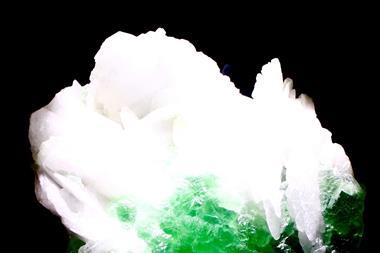All that glitters is not gold
David Rickard
Oxford University Press
2015 | 320pp | £17.99
ISBN 9780190203672

The majority of people have likely encountered the phrase ‘fool’s gold’ in one form or another: whether through a Stone Roses song, that film with Kate Hudson and Matthew McConaughey, or in Shakespeare’s Merchant of Venice. Most commonly it is thought of in relation to the gold-coloured mineral pyrite, and geochemist David Rickard delves into the mineral’s role throughout human history in Pyrite: a natural history of fool’s gold.
The idea for the book stemmed from an 800-page monograph Rickard wrote in 2012 that contained over 10,000 references. Fortunately Pyrite is a more manageable size, but despite Rickard’s claims that it will entertain and inform, I feel the reader needs to have a strong existing interest in this area. The content, which consistently summarises the key role pyrite has played throughout history, and the language used throughout – where I was required to ask people around me or check a dictionary on several occasions – does not make for an easy read.
Rickard has obviously conducted a lot of research in writing the book, which covers pyrite in relation to the origins of civilisation; crystals and atoms; microbes and minerals; and the global environment, among other subjects. He has also tracked references down to their original sources, where possible.
However, to go from pyrite being one of the first crystalline materials investigated by Lawrence Bragg as part of his x-ray research in 1913 to proclaiming the mineral ultimately led to the determination of the structure of DNA in 1953 jarred a bit with me. Yes, it was an important mineral during initial x-ray crystallographic studies, but, as Rickard mentions, so were salt, sphalerite, fluorspar and calcite. I found the way Rickard constantly made an effort to point out the importance of pyrite at various stages through history slightly too intense, and almost as though the reader is meant to come out convinced of pyrite’s importance rather than finding the content interesting or informative.
For those with a science background, the first three chapters may be a bit of a struggle. These chapters, covering how the phrase ‘fool’s gold’ came about and how pyrite got its name, are very densely packed with names, dates, places, and language conventions. This concentration of facts makes for quite hard reading, and there is not really a thread running through the chapters to tie them together. The latter chapters are more in the average chemists’ comfort zone, covering pyrite as both an ore originating from hydrothermal fluids and a deposit associated with microbial activity.
Pyrite is aimed at the keen scientist and is the type of book you can dip in and out of. It is very well researched, and gives a unique viewpoint on human and geological history by focusing on one mineral. You may just need a bit of patience to read it and accept the importance Rickard places on pyrite through time.
Purchase Pyrite: a natural history of fool’s goldfrom Amazon.co.uk












No comments yet